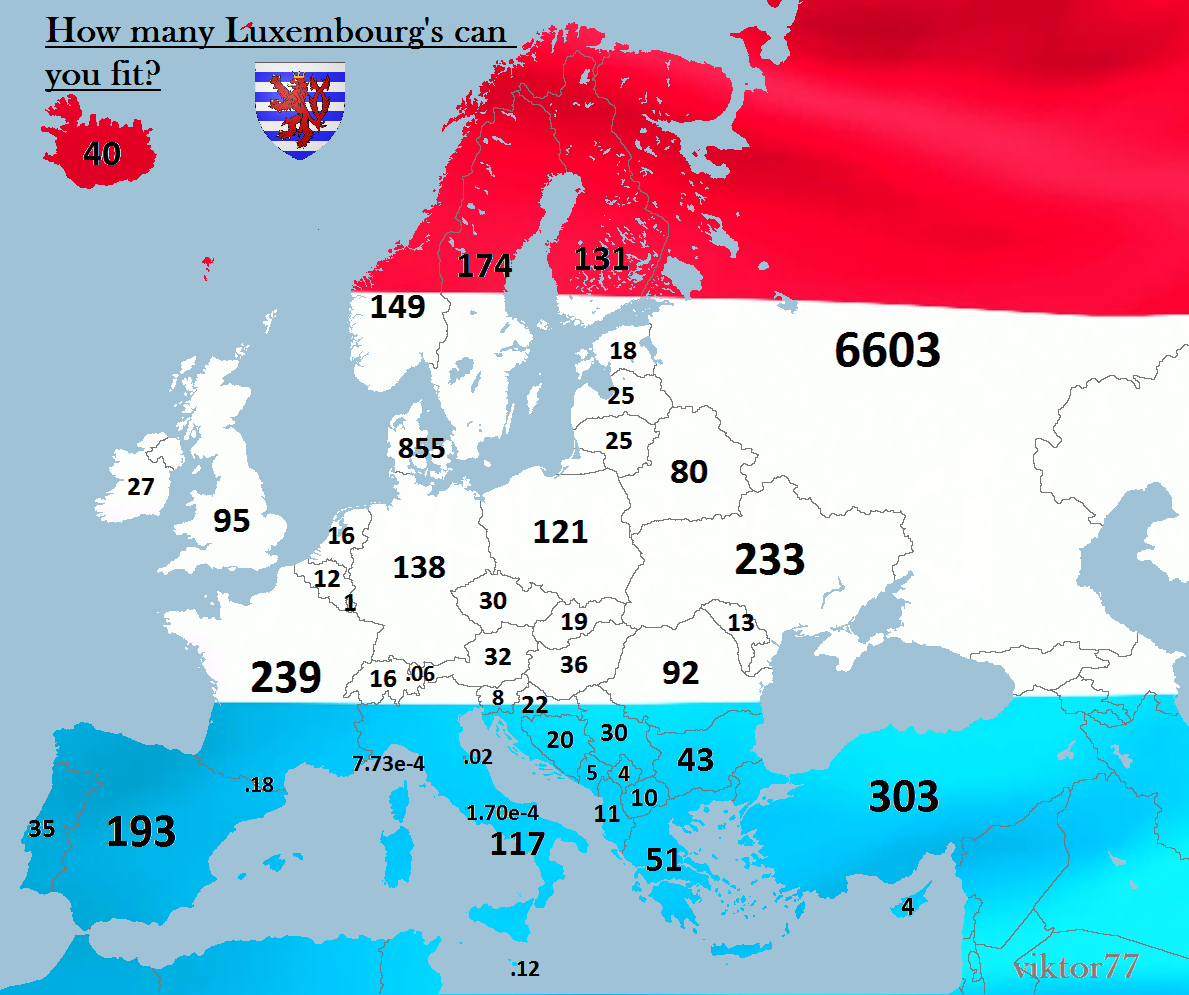Map of Luxembourg's Area Comparison


David Chen
Data Visualization Specialist
David Chen is an expert in transforming complex geographic datasets into compelling visual narratives. He combines his background in computer science ...
Geographic Analysis
What This Map Shows
This map visualizes how many times the area of Luxembourg can fit into various countries and regions across the globe. Luxembourg, a small but significant country in Western Europe, covers approximately 2,586 square kilometers. The visualization effectively illustrates the comparisons between Luxembourg and larger countries, revealing how this diminutive nation stacks up against its neighbors and other global territories.
Interestingly, while Luxembourg is often overshadowed by larger countries, its strategic location and economic prowess make it a key player in Europe. But let’s dive deeper into the geographical significance of Luxembourg itself before we explore the comparisons that the map presents.
Deep Dive into Luxembourg’s Geography
Luxembourg is bordered by Belgium to the west and north, Germany to the east, and France to the south. This strategic location has not only influenced its culture and economy but its geography as well. The country is characterized by a mix of rolling hills, dense forests, and the meandering Moselle River, which forms part of its eastern border.
The Moselle River, flowing from France through Luxembourg and into Germany, is crucial for both ecological and economic reasons. It supports a variety of wildlife and provides irrigation for agricultural activities, which are integral to Luxembourg's economy. The rich soils along the riverbanks contribute to the production of some renowned Luxembourg wines, particularly those made from the Riesling grape.
Luxembourg's landscape is part of the Ardennes region, which is known for its rugged terrain and rich biodiversity. The country’s highest point, Kneiff, is only 560 meters above sea level, making it relatively flat compared to many of its European neighbors. Despite its small size, Luxembourg is home to a variety of ecosystems, from forests and moors to wetlands, showcasing the country's commitment to environmental conservation.
Additionally, Luxembourg boasts a rich historical tapestry, visible in its numerous castles and fortresses, like the famous Vianden Castle. This historical context adds another layer to its geographical identity, making it not just a tiny dot on the map, but a place of significant cultural heritage.
Regional Analysis
When comparing Luxembourg's area to countries like France, Germany, or even larger regions like the United States or Brazil, the differences are staggering. For instance, France spans about 551,695 square kilometers, which means you could fit Luxembourg into France approximately 213 times! Similarly, the United States, with its vast expanse of 9.8 million square kilometers, could accommodate Luxembourg around 3,800 times.
However, the map also highlights more localized comparisons, such as with its neighbors. In Belgium, with an area of about 30,528 square kilometers, Luxembourg fits around 12 times. Germany, being the largest neighbor, has an area of approximately 357,022 square kilometers, allowing for around 138 Luxembourgs to occupy its space. Each of these comparisons paints a vivid picture of scale and perspective, emphasizing Luxembourg’s compactness while showcasing the vastness of its neighbors.
Significance and Impact
Understanding how Luxembourg fits into the global map contextually is more than just a numerical exercise; it speaks volumes about economic, political, and cultural relationships. Luxembourg is often referred to as one of the world’s richest countries per capita, thanks to its robust banking sector and favorable tax conditions. It serves as a hub for many international organizations, including the European Union, which further amplifies its global significance despite its small size.
The implications of this geographic positioning are profound. For example, it allows Luxembourg to maintain a higher standard of living for its residents, with a strong emphasis on social welfare and public services. Additionally, its geographic compactness enables efficient governance and transportation systems, making it easier for citizens to access services and for businesses to thrive.
In terms of future projections, as Europe continues to grapple with issues such as climate change and urbanization, Luxembourg’s model of sustainable development could serve as an example for other small nations. The country’s policies on green energy, waste management, and biodiversity conservation are already setting benchmarks within the EU.
In conclusion, the question of how many Luxembourgs can fit into various countries is more than just a curiosity; it invites us to consider the broader implications of geography, economy, and culture. It reminds us that even the smallest countries can hold significant power and influence on the global stage.
Visualization Details
- Published
- October 30, 2025
- Views
- 6
Comments
Loading comments...